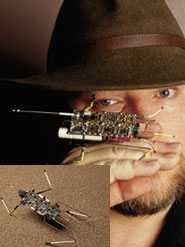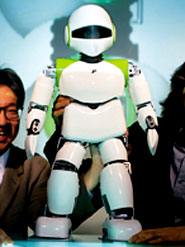AI :: Tomy develops new robot that can hold conversation
Tomy develops new robot that can hold conversation
Toymaker Tomy Co. said Wednesday it has developed a robot with artificial intelligence that is capable of recognizing words in a conversational context.
Tomy will put the robot, known as memoni, on sale for 18,000 yen in the summer after displaying it at a toy fair to be held in Tokyo later this month.
When it hears a sentence, the robot can pick up two words and respond accordingly, Tomy said.
If, for example, a woman says, "I'll go out on a date with him tomorrow," the robot is capable of recognizing the words "him" and "date" and confirm the man's name or respond with a question such as, "Where will you go?"
[...]






